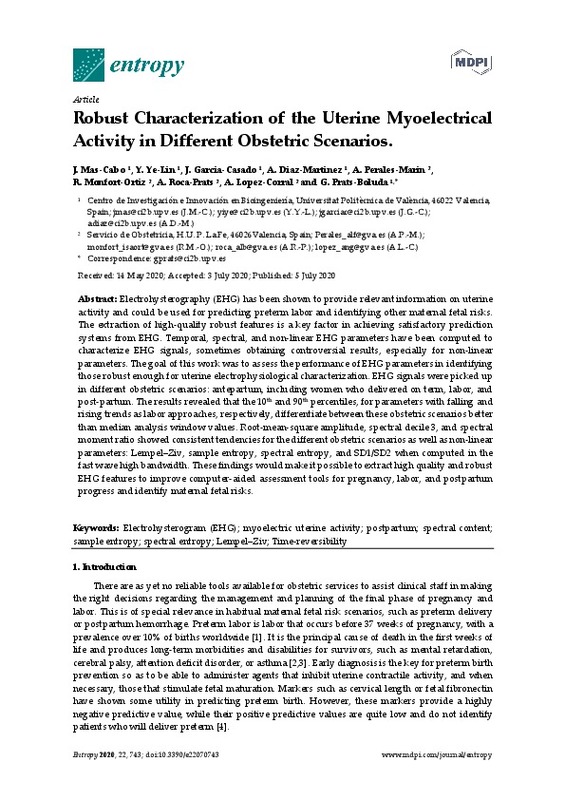Wagura, P., Wasunna, A., Laving, A., Wamalwa, D., & Ng’ang’a, P. (2018). Prevalence and factors associated with preterm birth at kenyatta national hospital. BMC Pregnancy and Childbirth, 18(1). doi:10.1186/s12884-018-1740-2
Liu, L., Johnson, H. L., Cousens, S., Perin, J., Scott, S., Lawn, J. E., … Black, R. E. (2012). Global, regional, and national causes of child mortality: an updated systematic analysis for 2010 with time trends since 2000. The Lancet, 379(9832), 2151-2161. doi:10.1016/s0140-6736(12)60560-1
Howson, C. P., Kinney, M. V., McDougall, L., & Lawn, J. E. (2013). Born Too Soon: Preterm birth matters. Reproductive Health, 10(S1). doi:10.1186/1742-4755-10-s1-s1
[+]
Wagura, P., Wasunna, A., Laving, A., Wamalwa, D., & Ng’ang’a, P. (2018). Prevalence and factors associated with preterm birth at kenyatta national hospital. BMC Pregnancy and Childbirth, 18(1). doi:10.1186/s12884-018-1740-2
Liu, L., Johnson, H. L., Cousens, S., Perin, J., Scott, S., Lawn, J. E., … Black, R. E. (2012). Global, regional, and national causes of child mortality: an updated systematic analysis for 2010 with time trends since 2000. The Lancet, 379(9832), 2151-2161. doi:10.1016/s0140-6736(12)60560-1
Howson, C. P., Kinney, M. V., McDougall, L., & Lawn, J. E. (2013). Born Too Soon: Preterm birth matters. Reproductive Health, 10(S1). doi:10.1186/1742-4755-10-s1-s1
Euliano, T. Y., Nguyen, M. T., Darmanjian, S., McGorray, S. P., Euliano, N., Onkala, A., & Gregg, A. R. (2013). Monitoring uterine activity during labor: a comparison of 3 methods. American Journal of Obstetrics and Gynecology, 208(1), 66.e1-66.e6. doi:10.1016/j.ajog.2012.10.873
Devedeux, D., Marque, C., Mansour, S., Germain, G., & Duchêne, J. (1993). Uterine electromyography: A critical review. American Journal of Obstetrics and Gynecology, 169(6), 1636-1653. doi:10.1016/0002-9378(93)90456-s
Chkeir, A., Fleury, M.-J., Karlsson, B., Hassan, M., & Marque, C. (2013). Patterns of electrical activity synchronization in the pregnant rat uterus. BioMedicine, 3(3), 140-144. doi:10.1016/j.biomed.2013.04.007
Fele-Žorž, G., Kavšek, G., Novak-Antolič, Ž., & Jager, F. (2008). A comparison of various linear and non-linear signal processing techniques to separate uterine EMG records of term and pre-term delivery groups. Medical & Biological Engineering & Computing, 46(9), 911-922. doi:10.1007/s11517-008-0350-y
Mas-Cabo, J., Prats-Boluda, G., Perales, A., Garcia-Casado, J., Alberola-Rubio, J., & Ye-Lin, Y. (2018). Uterine electromyography for discrimination of labor imminence in women with threatened preterm labor under tocolytic treatment. Medical & Biological Engineering & Computing, 57(2), 401-411. doi:10.1007/s11517-018-1888-y
Vinken, M. P. G. C., Rabotti, C., Mischi, M., & Oei, S. G. (2009). Accuracy of Frequency-Related Parameters of the Electrohysterogram for Predicting Preterm Delivery. Obstetrical & Gynecological Survey, 64(8), 529-541. doi:10.1097/ogx.0b013e3181a8c6b1
Hassan, M., Terrien, J., Marque, C., & Karlsson, B. (2011). Comparison between approximate entropy, correntropy and time reversibility: Application to uterine electromyogram signals. Medical Engineering & Physics, 33(8), 980-986. doi:10.1016/j.medengphy.2011.03.010
Lemancewicz, A., Borowska, M., Kuć, P., Jasińska, E., Laudański, P., Laudański, T., & Oczeretko, E. (2016). Early diagnosis of threatened premature labor by electrohysterographic recordings – The use of digital signal processing. Biocybernetics and Biomedical Engineering, 36(1), 302-307. doi:10.1016/j.bbe.2015.11.005
Garcia-Casado, J., Ye-Lin, Y., Prats-Boluda, G., Mas-Cabo, J., Alberola-Rubio, J., & Perales, A. (2018). Electrohysterography in the diagnosis of preterm birth: a review. Physiological Measurement, 39(2), 02TR01. doi:10.1088/1361-6579/aaad56
Most, O., Langer, O., Kerner, R., Ben David, G., & Calderon, I. (2008). Can myometrial electrical activity identify patients in preterm labor? American Journal of Obstetrics and Gynecology, 199(4), 378.e1-378.e6. doi:10.1016/j.ajog.2008.08.003
Verdenik, I., Pajntar, M., & Leskošek, B. (2001). Uterine electrical activity as predictor of preterm birth in women with preterm contractions. European Journal of Obstetrics & Gynecology and Reproductive Biology, 95(2), 149-153. doi:10.1016/s0301-2115(00)00418-8
Horoba, K., Jezewski, J., Matonia, A., Wrobel, J., Czabanski, R., & Jezewski, M. (2016). Early predicting a risk of preterm labour by analysis of antepartum electrohysterograhic signals. Biocybernetics and Biomedical Engineering, 36(4), 574-583. doi:10.1016/j.bbe.2016.06.004
Lucovnik, M., Maner, W. L., Chambliss, L. R., Blumrick, R., Balducci, J., Novak-Antolic, Z., & Garfield, R. E. (2011). Noninvasive uterine electromyography for prediction of preterm delivery. American Journal of Obstetrics and Gynecology, 204(3), 228.e1-228.e10. doi:10.1016/j.ajog.2010.09.024
Smrdel, A., & Jager, F. (2015). Separating sets of term and pre-term uterine EMG records. Physiological Measurement, 36(2), 341-355. doi:10.1088/0967-3334/36/2/341
Maner, W. (2003). Predicting term and preterm delivery with transabdominal uterine electromyography. Obstetrics & Gynecology, 101(6), 1254-1260. doi:10.1016/s0029-7844(03)00341-7
Leman, H., Marque, C., & Gondry, J. (1999). Use of the electrohysterogram signal for characterization of contractions during pregnancy. IEEE Transactions on Biomedical Engineering, 46(10), 1222-1229. doi:10.1109/10.790499
Mischi, M., Chen, C., Ignatenko, T., de Lau, H., Ding, B., Oei, S. G. G., & Rabotti, C. (2018). Dedicated Entropy Measures for Early Assessment of Pregnancy Progression From Single-Channel Electrohysterography. IEEE Transactions on Biomedical Engineering, 65(4), 875-884. doi:10.1109/tbme.2017.2723933
Garfield, R. E., Maner, W. L., MacKay, L. B., Schlembach, D., & Saade, G. R. (2005). Comparing uterine electromyography activity of antepartum patients versus term labor patients. American Journal of Obstetrics and Gynecology, 193(1), 23-29. doi:10.1016/j.ajog.2005.01.050
Maner, W. L., & Garfield, R. E. (2007). Identification of Human Term and Preterm Labor using Artificial Neural Networks on Uterine Electromyography Data. Annals of Biomedical Engineering, 35(3), 465-473. doi:10.1007/s10439-006-9248-8
DIMITROV, G. V., ARABADZHIEV, T. I., MILEVA, K. N., BOWTELL, J. L., CRICHTON, N., & DIMITROVA, N. A. (2006). Muscle Fatigue during Dynamic Contractions Assessed by New Spectral Indices. Medicine & Science in Sports & Exercise, 38(11), 1971-1979. doi:10.1249/01.mss.0000233794.31659.6d
Nagarajan, R., Eswaran, H., Wilson, J. D., Murphy, P., Lowery, C., & Preißl, H. (2003). Analysis of uterine contractions: a dynamical approach. The Journal of Maternal-Fetal & Neonatal Medicine, 14(1), 8-21. doi:10.1080/jmf.14.1.8.21
Zhang, X.-S., Roy, R. J., & Jensen, E. W. (2001). EEG complexity as a measure of depth of anesthesia for patients. IEEE Transactions on Biomedical Engineering, 48(12), 1424-1433. doi:10.1109/10.966601
Garfield, R. E., Maner, W. L., Maul, H., & Saade, G. R. (2005). Use of uterine EMG and cervical LIF in monitoring pregnant patients. BJOG: An International Journal of Obstetrics & Gynaecology, 112, 103-108. doi:10.1111/j.1471-0528.2005.00596.x
Grotegut, C. A., Paglia, M. J., Johnson, L. N. C., Thames, B., & James, A. H. (2011). Oxytocin exposure during labor among women with postpartum hemorrhage secondary to uterine atony. American Journal of Obstetrics and Gynecology, 204(1), 56.e1-56.e6. doi:10.1016/j.ajog.2010.08.023
[-]









